GreenChill Program: What it is and why it is Important?
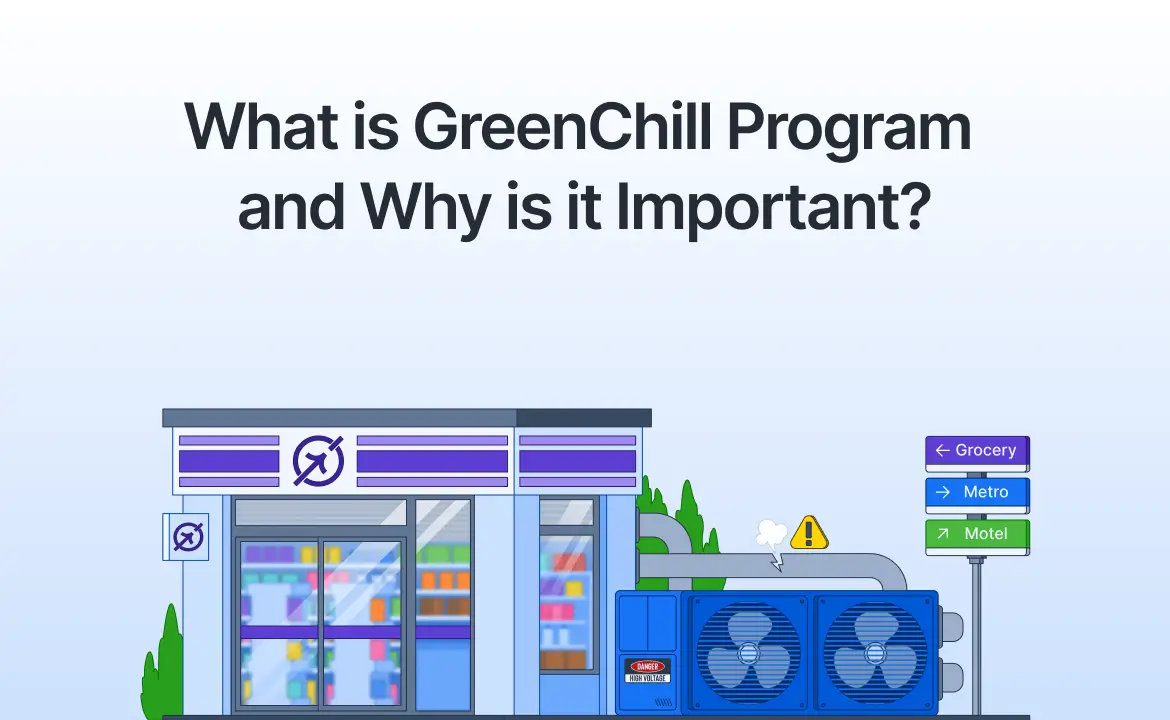
About GreenChill
The GreenChill Advanced Refrigeration Partnership is a voluntary initiative launched by the U.S. Environmental Protection Agency (EPA) in 2007. It helps food retailers transition to eco-friendly refrigerants, lower harmful emissions, and adopt advanced refrigeration technologies.
This isn’t just about regulatory compliance—it’s about future-proofing operations, reducing costs, and strengthening environmental credibility.
How GreenChill Works: Three Key Pillars
GreenChill functions through three coordinated programs, each targeting a different aspect of sustainability in commercial refrigeration:
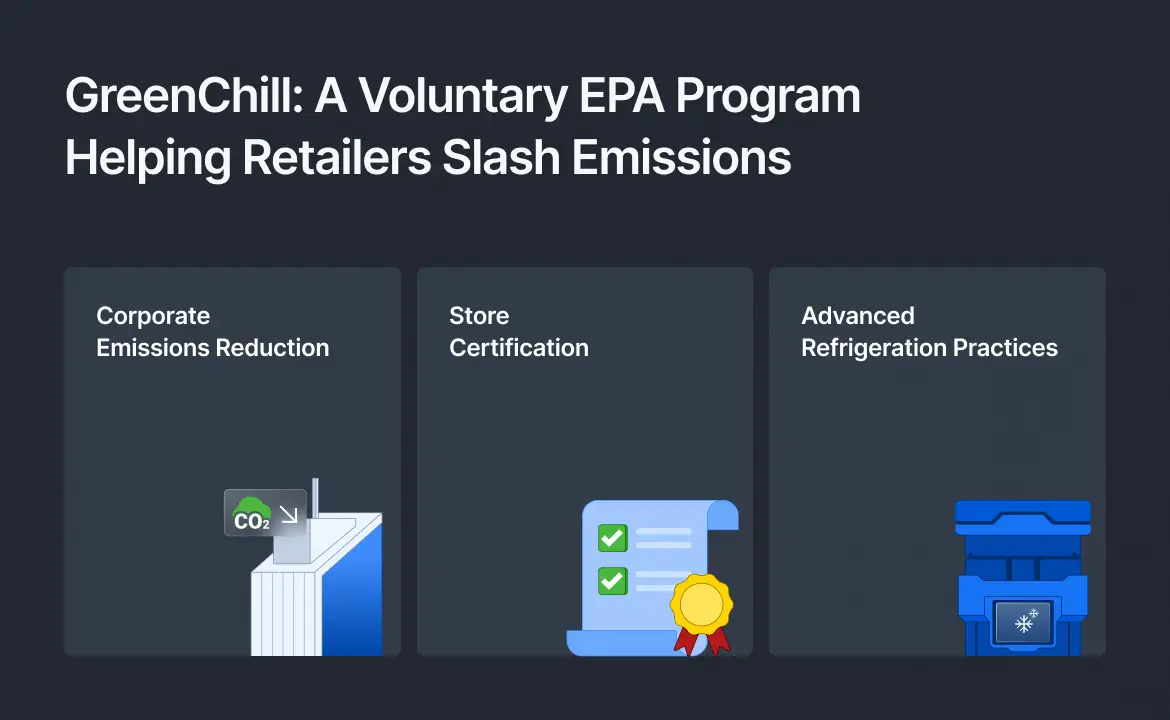
1) Corporate Emissions Reduction Program
The Corporate Emissions Reduction Program is designed to drive industry-wide impact by collaborating with the three largest stakeholder groups responsible for the bulk of refrigerant emissions.
a) Food retailers
b) Refrigeration system manufacturers
c) Chemical producers
The goal?
Reduce refrigerant emissions and improve industry standards across the board.
2) Store Certification Program
Recognizes individual retail stores that meet strict environmental benchmarks in refrigeration system design and emissions.
3) Advanced Refrigeration Program
Promotes adoption of cutting-edge refrigeration systems that use low-GWP (global warming potential) refrigerants and energy-efficient technologies.
Why is GreenChill Important: The Bigger Picture
- Since its launch, GreenChill participation has grown from 4,500 stores to over 13,000 nationwide.
- On average, GreenChill partners reduce refrigerant emissions to about half the industry norm.
- These efforts directly reduce greenhouse gas emissions, protect the ozone layer, and improve system efficiency—resulting in tangible environmental and cost-saving outcomes.
GreenChill Store Certification: What Do the Tiers Mean?
GreenChill-certified stores can earn one of three certification levels based on refrigerant choice, system efficiency, and emissions control:
a) Platinum-Level Certification (Highest Standard)
- Use only zero ozone-depleting refrigerants.
- All refrigerants must be EPA SNAP-approved.
- HFC refrigerant charge ≤ 0.5 lbs./MBTU/hr.
- Annual emissions rate ≤ 5%.
- Optional: Use refrigerants with GWP < 150.
- Newly constructed stores must pass a leak-tightness test post-installation.
✅ Best for: Retailers aiming to lead on climate action and refrigerant innovation.
b) Gold-Level Certification
- Use zero ozone-depleting and SNAP-approved refrigerants.
- HFC charge ≤ 1.25 lbs./MBTU/hr.
- Emissions rate ≤ 15%.
- Leak testing required for new stores.
✅ Best for: Businesses advancing sustainability with strong but flexible goals.
c) Silver-Level Certification
- Same refrigerant and approval requirements.
- HFC charge ≤ 1.75 lbs./MBTU/hr.
- Emissions rate ≤ 15%.
- Leak-tightness testing required for new stores.
✅ Best for: Retailers beginning their sustainability journey.
Why GreenChill Matters in the U.S. Retail Landscape
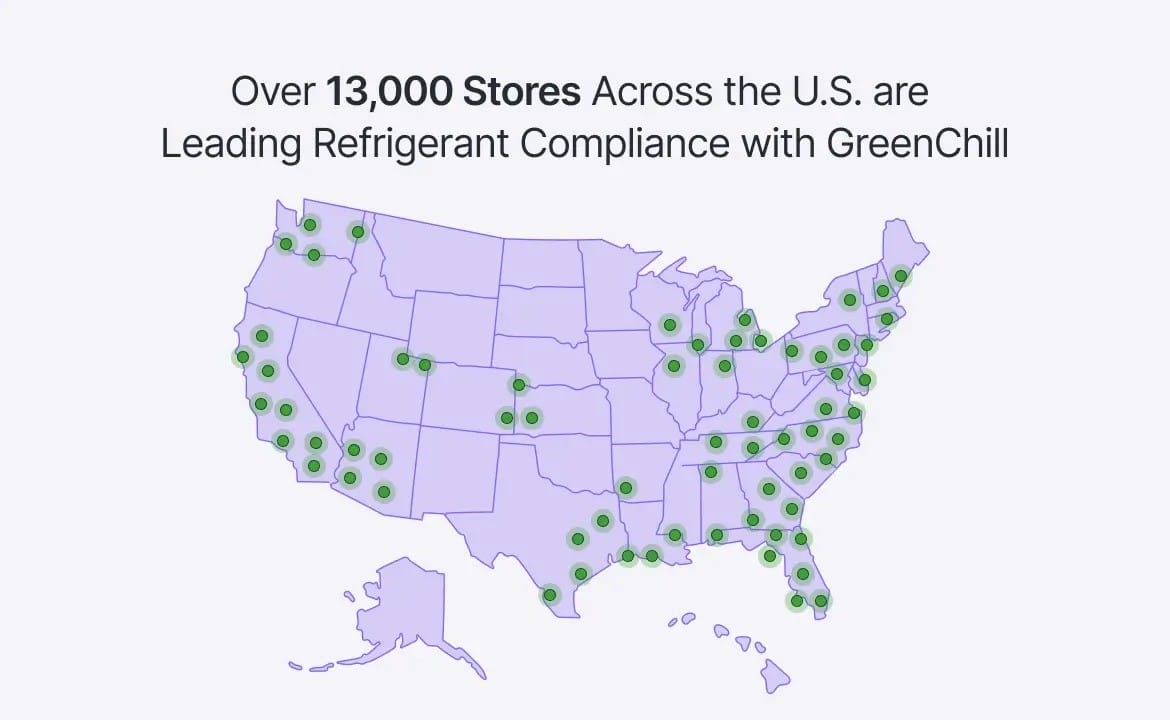
The U.S. retail refrigeration sector is under increasing scrutiny—not just from regulators, but from customers, investors, and climate advocates. Refrigerant emissions are a silent but powerful contributor to climate change.
The EPA's GreenChill Program directly addresses these environmental concerns by collaborating with food retailers to:
- Transition to refrigerants with lower GWPs and zero ozone depletion potential.
- Implement best practices to minimize refrigerant leaks.
- Adopt advanced refrigeration technologies that are more environmentally friendly.
Let’s break down why GreenChill is more than just a sustainability badge.
1) Environmental Impact: Tackling One of Retail’s Largest Emission Sources
Refrigerants like hydrofluorocarbons (HFCs) can have global warming potentials (GWPs) up to 4,000 times higher than CO₂. In retail environments—where large-scale refrigeration systems run 24/7—small leaks add up quickly.
A typical supermarket can leak over 1,000 pounds of refrigerant per year, making it a hidden environmental liability.
GreenChill regulations directly address this by helping retailers:
- Shift to lower-GWP or natural refrigerants (e.g., R744, R290). and ammonia that don't damage the ozone layer.
- Implement best-in-class leak detection and prevention practices, often cutting emission rates in half compared to industry averages.
- Adopt next-gen refrigeration systems with lower charge sizes and improved efficiency.
If every U.S. grocery store achieved GreenChill-level leak rates, the industry could cut emissions equivalent to removing over 1.5 million passenger vehicles from the road annually.
2) Regulatory Readiness: Stay Ahead of Tightening Rules
GreenChill is voluntary—but highly strategic.
It aligns closely with:
- The Clean Air Act, which governs refrigerant handling.
- The EPA’s SNAP Program, which approves climate-safe refrigerant alternatives.
- State-level HFC regulations, especially in California, New York, and Washington.
Retailers following GreenChill guidelines are already positioned for compliance, avoiding the rush (and cost) of last-minute regulatory adaptations.
3) Financial Benefits: Cutting Hidden Costs of Leakage
Refrigerant losses aren’t just bad for the environment—they’re bad for the bottom line.
Estimated average costs per store due to leaks:
- $20,000–$30,000/year in refrigerant replacement.
- Additional energy costs from system inefficiency.
- Higher maintenance and emergency service costs.
GreenChill partners report:
- Lower refrigerant purchase volumes year-over-year.
- Reduced service calls due to better system health.
- Longer equipment life through proactive maintenance practices.
If all U.S. retailers met GreenChill standards, the industry could save over $108 million annually.
4) Consumer Perception: Sustainability Sells
Today’s consumer isn’t just shopping for price and convenience—they’re shopping for values.
- 73% of U.S. consumers say they’re more likely to shop with retailers who practice environmental responsibility (NielsenIQ).
- GreenChill certification is a credible, third-party signal of climate leadership that resonates with eco-conscious shoppers.
It also plays well in investor and ESG reporting, strengthening brand trust with stakeholders beyond just customers.
5) Competitive Advantage: Stand Out in a Crowded Market
Most retailers still treat refrigeration emissions as a technical issue. GreenChill partners treat it as a business opportunity.
What GreenChill adds to your competitive playbook:
- A cleaner operational footprint without sacrificing performance.
- A talking point for sustainability marketing and corporate storytelling.
- Stronger resilience to refrigerant price volatility and supply chain disruptions.
Retailers like Whole Foods, Aldi, and Target have publicly championed their GreenChill participation, not just for compliance, but to lead by example in an increasingly climate-conscious industry.
Bottom Line: GreenChill Isn’t Just a Program—It Can Be a Strategic Edge
It helps retailers:
- Future-proof operations against rising regulatory pressure.
- Reduce hidden costs tied to refrigerant inefficiencies.
- Build customer trust with credible sustainability efforts.
Lead the transition to low-impact cooling—before they’re forced to.
Achieving Compliance Through GreenChill Participation
While participation in GreenChill is voluntary, the real value emerges when retailers treat it not just as an environmental commitment—but as a strategic lever.
Here's how forward-thinking businesses are turning these standards into a competitive edge.
How to Become a GreenChill Partner: Step-by-Step
Joining the EPA’s GreenChill Partnership isn’t just a badge of honor—it’s a forward-looking investment in compliance readiness, operational efficiency, and corporate sustainability.
Here's a streamlined path to becoming a partner:
- Request the GreenChill Partnership Packet
Start by reaching out to the EPA’s GreenChill team to request the official packet. This includes:
- The GreenChill Partnership Agreement
- Examples of reporting templates and goals
- Technical details on emissions metrics and program expectations
- Review and Sign the Agreement
Carefully review the partnership responsibilities and performance expectations. Signing this agreement means your organization commits to tracking refrigerant data, reducing leaks, and reporting emissions annually. - Undergo EPA Review
The EPA conducts a screening to verify eligibility, including an enforcement check. This ensures all prospective partners are in good standing with federal environmental regulations. - Finalize the Partnership
Once approved, the EPA countersigns your agreement. From that point forward, your company is recognized as an official GreenChill Partner—and can begin leveraging program resources, data tools, and public visibility.
Ready to join 13,000+ retailers who've future-proofed their refrigeration?
Talk to our team to learn how Facilio can help you streamline GreenChill certification, reduce emissions, and cut compliance costs—without replacing your existing systems.
Schedule a Demo NowGreenChill Store-Level Certification: What are the Criteria and How It Works
GreenChill doesn’t stop at corporate partnerships.
Individual food retail locations—whether new builds or legacy stores—can apply for store certification at three levels: Platinum, Gold, and Silver.
Core Certification Criteria Across All Levels
Regardless of level, each certified store must meet these foundational requirements:
- Zero Ozone-Depleting Refrigerants
Only refrigerants with zero ozone depletion potential are allowed—typically newer, SNAP-approved alternatives. - Charge Limit Compliance
Each level has a cap on the amount of refrigerant that can be used per unit of cooling capacity (measured in lbs./MBTU/hr.). - Low Emissions Rates
Stores must maintain annual refrigerant leak rates within set thresholds (5–15%, depending on certification level). - Leak Tightness Testing
Required for all newly constructed stores, ensuring no large-scale leaks from the outset.
GreenChill Certification Levels at a Glance
Level | Max Leak Rate | Max Charge | GWP Cap (Optional Path) |
Platinum | ≤ 5% | ≤ 0.5 lbs./MBTU/hr. | GWP < 150 |
Gold | ≤ 15% | ≤ 1.25 lbs./MBTU/hr. | N/A |
Silver | ≤ 15% | ≤ 1.75 lbs./MBTU/hr. | N/A |
How to Apply for GreenChill?
Ready to take the next step?
Here’s a simple breakdown of how retailers can apply for the GreenChill Partnership and start their journey toward cleaner, compliant refrigeration operations.
- Determine Eligibility
Identify whether your store is a retrofit or new construction. This determines your application track. - Complete and Submit the Application
Submit system specs, refrigerant data, and test results via email to: GreenChill@epa.gov - EPA Review and Response
The EPA evaluates the submission and issues a certification decision. If successful, you’ll receive official recognition and promotional assets for public use.
Staying Certified: Best Practices for Ongoing Compliance
Got GreenChill certified? Great.
But, certification isn’t a one-and-done achievement—it requires active, ongoing commitment.
Here are the key practices top-performing GreenChill-certified stores follow:
- Regular Leak Monitoring
Use advanced leak detection systems and monitor key areas like valves, compressors, and joints. Frequent inspections reduce long-term repair costs and keep leak rates in check. - Staff Training Programs
Ensure that all maintenance teams are trained in EPA-approved refrigerant handling and detection practices. Frontline awareness is a critical line of defense. - Refrigeration Upgrades
Phase in advanced systems such as CO₂ transcritical or hydrocarbon-based units that not only lower emissions but also improve energy efficiency. - Transparent Record-Keeping
Maintain up-to-date logs for refrigerant purchases, leak incidents, repairs, and inspections. These records are vital for audits and for tracking your own performance improvements.
Future-Proof Your GreenChill Compliance—Without the Headaches
The shift away from high-GWP refrigerants like HFCs isn’t just about meeting mandates—it’s a strategic inflection point. Retailers and cold storage operators who act now can gain far more than compliance: they can unlock operational resilience, reduce environmental impact, and lead the charge in sustainability.
How Facilio Makes It Possible
Facilio’s Connected Refrigeration software turns complex compliance workflows into streamlined, automated operations.
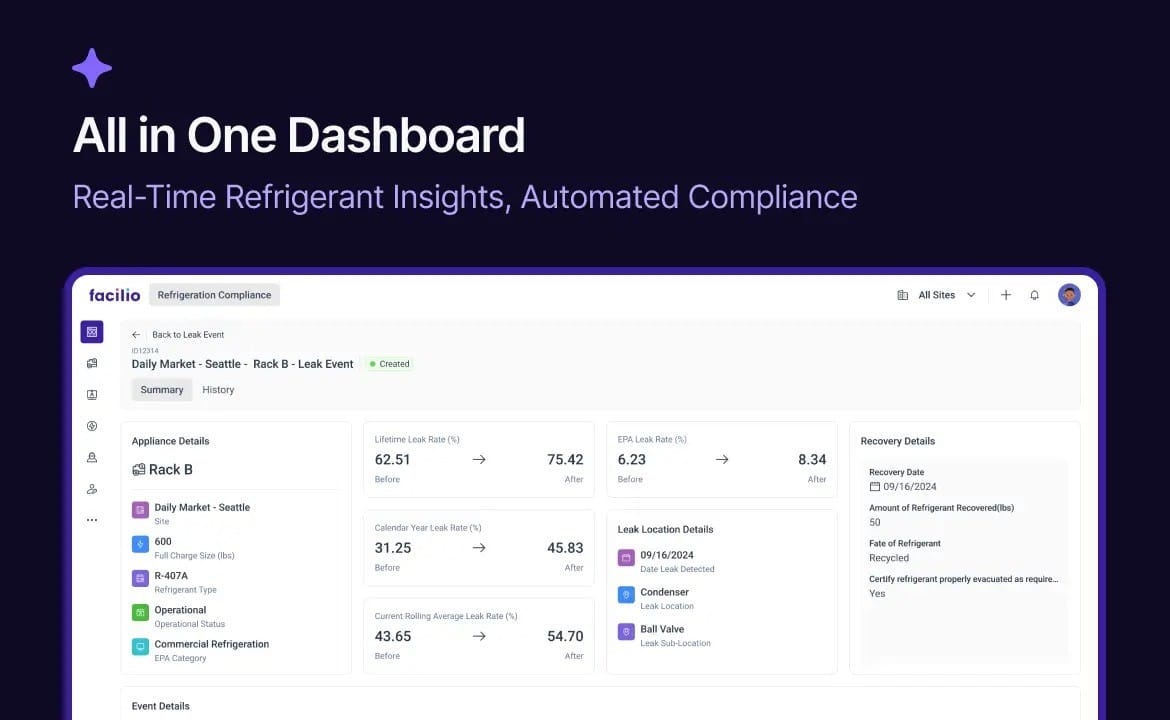
By delivering real-time visibility, predictive insights, and seamless reporting, it equips retailers to stay ahead of evolving EPA and GreenChill requirements, without overhauling existing infrastructure.
Why Now Is the Right Time
- Minimize Risk: Spot and fix refrigerant leaks before they become regulatory violations.
- Boost Profitability: Reduce refrigerant loss, lower energy consumption, and optimize maintenance costs.
- Support Sustainability Goals: Align with GreenChill and broader ESG initiatives effortlessly.
- Ensure Long-Term Compliance: Get ahead of the HFC phaseout and be ready for what’s next.
Proven at Scale—King Kullen’s Success Story
America's one of leading supermarket chains, King Kullen leveraged Facilio’s Connected Retail platform to automate compliance tracking, detect risks early, and maintain a strong sustainability posture across its store network.
The result?
Smarter operations, full asset visibility, and peace of mind.
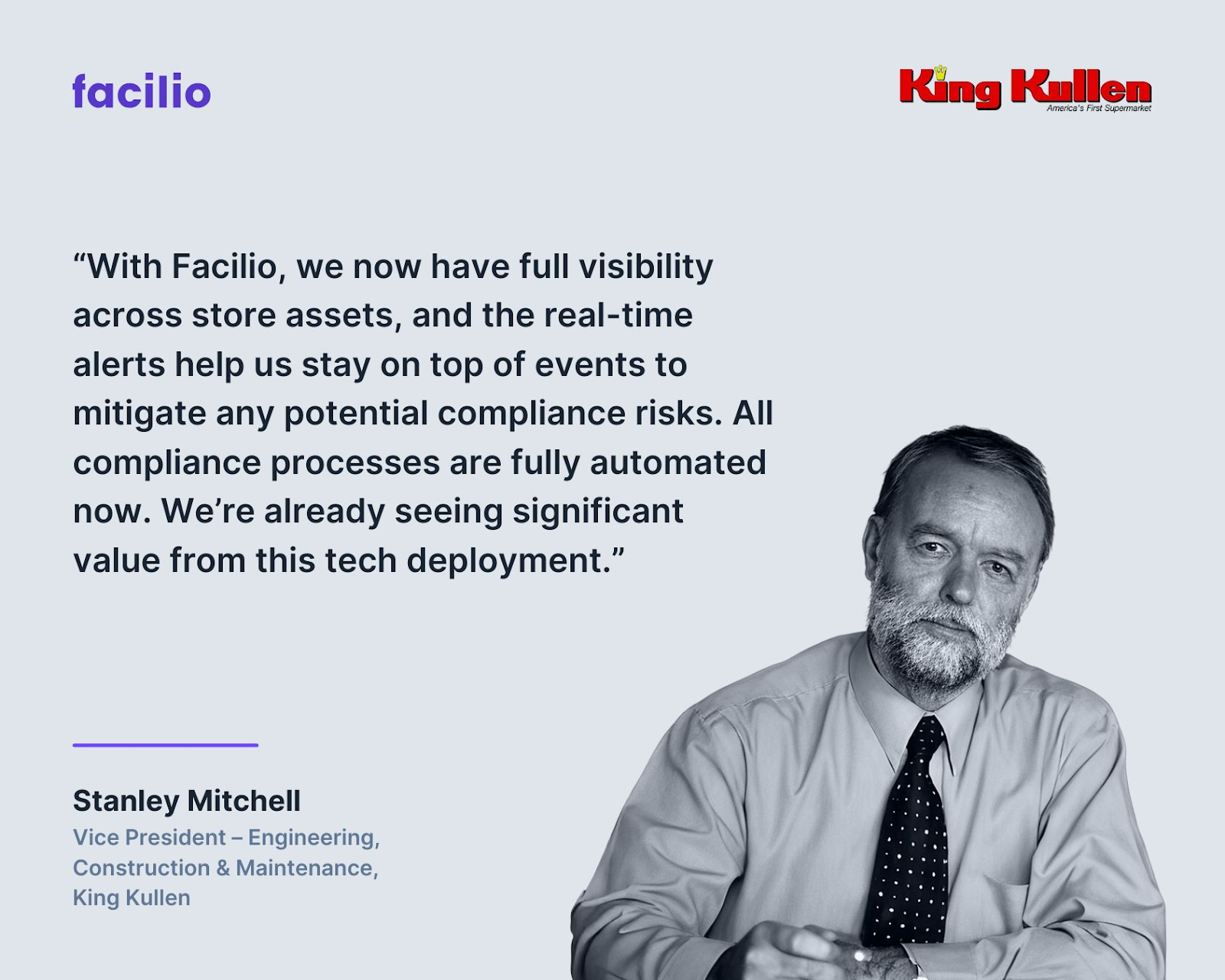
Take the Next Step Forward with Facilio
Don't wait for regulations to catch up. Get ahead, stay compliant, and drive operational excellence with Facilio.
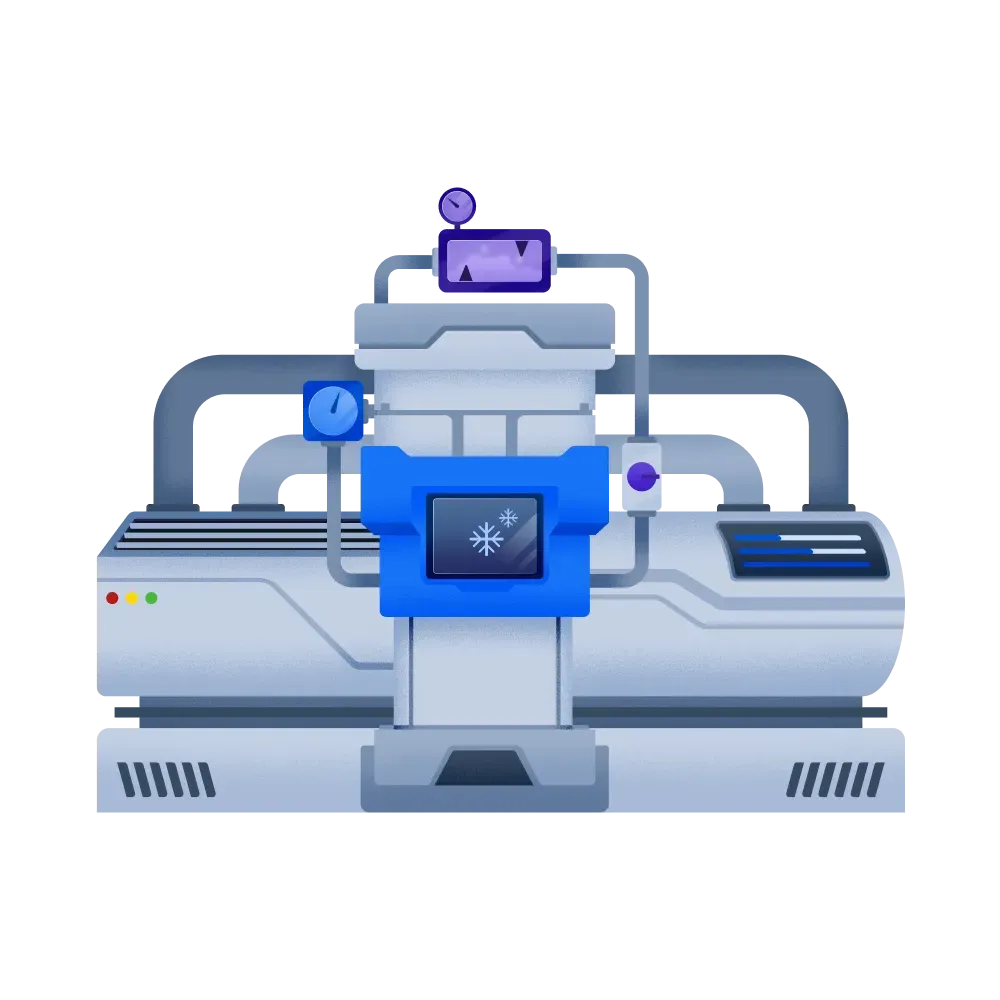
See how King Kullen turned refrigerant compliance into a competitive advantage.
Schedule My Demo NowSee it in action—book your personalized demo today.
